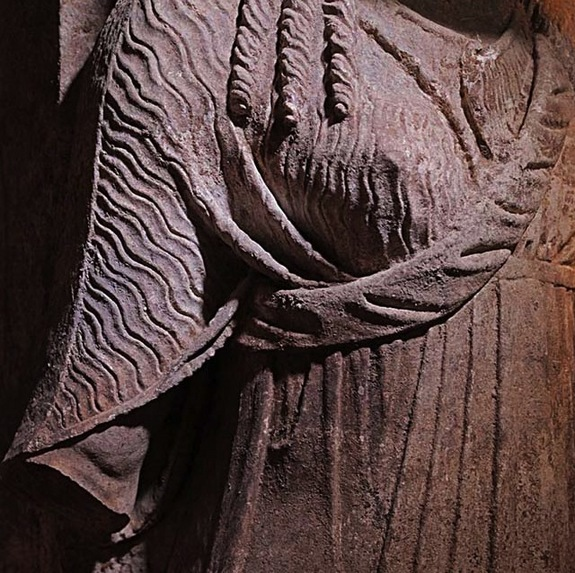
Archeologists have revealed the expertly made robes of two female stone statues standing watchman at the doorway of a colossal Macedonian tomb, going again to the time of Alexander the Great, under unearthing in Greece.
Excavators got their first sight of the wavy-haired statues — known as caryatids — a weekend ago, when the stone heads and middles were uncovered at the old entombment mind boggling at Kasta Hill in Amphipolis, 65 miles (104 kilometers) east of Thessaloniki. Archeologists needed to uproot a divider of fixing stones to uncover whatever is left of the statues' bodies.

Any individual who has gone by the Acropolis in Athens and remained before the Erechtheion would be acquainted with caryatids, or female statues that take the spot of segments or columns. Despite the fact that cut from stone, the transparent robes of the caryatids at Amphipolis have "extraordinary" folds, authorities with the Greek Ministry of Culture said in an announcement Thursday. [see Photos of the Alexander-Era Tomb Excavation]
"The right arm of the western caryatid and the left arm of the eastern one are both outstretched, as though to typically avert anybody endeavoring to enter the grave," the service said.
The progressing unearthings at Amphipolis have been viewed with fervor over the past a few weeks. Two headless sphinxes were revealed at the door of the gigantic internment hill, which is encased by a marble divider measuring 1,600 feet (490 meters) around the border,
Lead prehistorian Katerina Peristeri has said the group accepts the tomb goes again to the fourth century B.c. furthermore was constructed by Dinocrates, Alexander the Great's boss planner. The excavators have been tight-lipped about who they think may be covered inside. Some say the tomb may fit in with one of Alexander's commanders or relatives. Yet it probably doesn't contain the assemblage of Alexander the Great himself — chronicled records show he was covered in Alexandria, however his remaining parts have never been found.
No comments:
Post a Comment